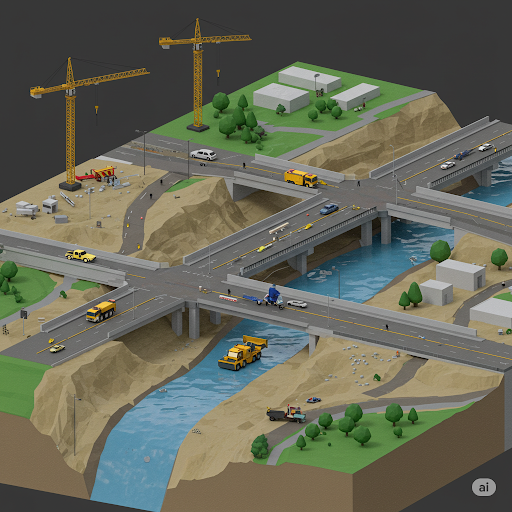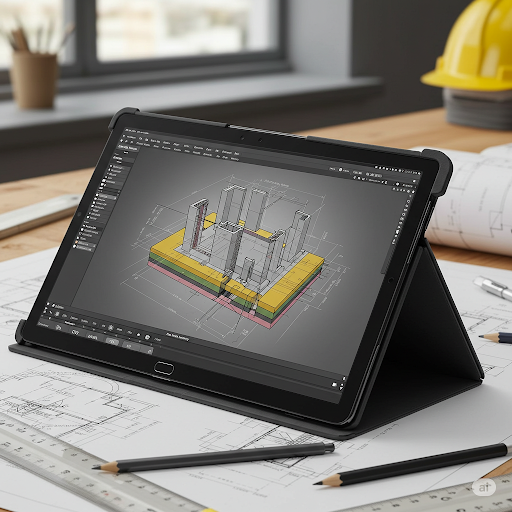
Creating civil engineering content that educates and entertains can be a challenge—especially when you want to keep your content faceless. However, using animated 2D diagrams, simple characters, and storytelling techniques, engineering creators can explain both right and wrong construction designs in a visually compelling way.
In this guide, we’ll walk you through a step-by-step animated scene, starting with a flawed floor plan and ending with the corrected version. We’ll include a symbolic animated human icon, reaction cues, wrong/correct symbols, and voiceovers or text overlays to ensure clarity.
Whether you’re an architect, civil engineer, student, or educator, this guide is crafted for content creators who want to turn static 2D plans into engaging video lessons.

Find tablets for creating engineering video
📌 Why Use 2D Engineering Diagrams for Content Creation?
- Universally understood: 2D plans are common in civil engineering and easily recognized.
- Ideal for animation: Easy to convert into animated sequences using tools like Adobe Animate, Vyond, or After Effects.
- Low budget, high value: You don’t need expensive cameras or show your face—just clear visuals and good narration.
🏗️ Scenario-Based Video: From Wrong to Right
Let’s start with a scenario that not only informs but also creates a “wait, what just happened?” moment for the viewer. This approach builds engagement, especially when paired with motion graphics.
🔴 Phase 1: Wrong Floor Plan
🧱 Description:
A man opens the door to what he thinks is a living room but is immediately confronted by a bathroom located directly at the entrance.
🎬 Scene Breakdown:
| Element | Description |
|---|---|
| Human Icon | A simple stick figure or silhouette walking from left to right. |
| Door Animation | Door opens inward with a basic swing motion. |
| Bathroom Layout | Sink, commode, and tile texture visibly rendered behind the door. |
| Visual Cue | Red “❌” (cross mark) appears once the man looks surprised. |
| Reaction | Man stops walking, tilts head back slightly, indicating surprise. |

Find tablets for creating engineering video
🗨️ Text Overlay or Voiceover:
“A bathroom right after the main entrance? This is a classic example of a poorly thought-out plan.”
🎨 Tools to Animate:
- Adobe Animate: Use tweening for door swing and character motion.
- Vyond or Animaker: Use prebuilt icons and transitions.
- Canva + Premiere Pro: Combine frames into a short video.
✅ Phase 2: Correct Floor Plan
🧱 Description:
The entrance leads into a foyer or small hall, and the bathroom is placed more discreetly to the side or after a buffer space.
🎬 Scene Breakdown:
| Element | Description |
|---|---|
| Human Icon | Same stick figure walks in again. |
| Room Layout | This time, the layout shows a small lobby or entry hall. Bathroom placed laterally. |
| Visual Cue | Green “✔️” (tick mark) appears. |
| Reaction | The man walks smoothly inside with no interruption. |
🗨️ Text Overlay or Voiceover:
“A well-designed plan ensures privacy and comfort. Placing the bathroom away from direct entrance is always a better choice.”
🔁 Transition Suggestion:
Use a wipe effect between wrong and right plan, or a split-screen for side-by-side comparison.

Find tablets for creating engineering video
🧠 Educational Insight (Optional Add-On)
You can add small pop-up facts during the video, such as:
- “80% of homeowners consider bathroom privacy a top priority.”
- “Poor floor planning affects resale value significantly.”
This not only adds depth to your video but also increases watch time and retention.
🧰 Software Recommendations for Faceless Engineering Videos
| Tool | Purpose | Free Plan | Best Feature |
|---|---|---|---|
| Adobe Animate | 2D Character and object animation | No | Frame-by-frame control |
| Vyond | Ready-made animation assets | No | Fast drag-and-drop scenes |
| Canva + Video Editor | Static image animation | Yes | Simplicity |
| Doodly | Whiteboard drawing of diagrams | No | Visual storytelling for technical plans |
| Adobe After Effects | Advanced motion graphics | No | Camera tracking and masking |
📊 Comparison Table: Wrong vs. Correct Plan
| Feature | Wrong Plan | Correct Plan |
|---|---|---|
| Entry Design | Door opens to bathroom | Door opens to lobby |
| Visual Appeal | Uncomfortable layout | Visually inviting |
| Privacy | Compromised | Maintained |
| User Reaction | Confused / Surprised | Comfortable / Natural |
| Floor Flow | Interrupted | Smooth |
| Placement Logic | Function over flow | Balanced functionality and flow |
| Emotional Cue | Red “❌” icon, pause | Green “✔️” icon, smooth walk |
| Storytelling Impact | “Oh no!” moment | “Ah, much better” resolution |

Find tablets for creating engineering video
🎯 Target Audience for These Videos
- Civil engineering students
- Home architecture planners
- DIY home builders
- Real estate content creators
- YouTube educators who want faceless content
🧩 Additional Content Ideas (Series Continuation)
Once your audience responds well to this format, you can create an entire video series:
| Topic | Scenario | Story Angle |
|---|---|---|
| Staircase Design | Stair opens right into a bedroom | “Privacy compromised” |
| Kitchen Location | Kitchen near toilet wall | “Health & hygiene” |
| Bedroom Window | Window facing neighbor’s bathroom | “Lack of privacy” |
| Living Room Layout | Door opens to TV backside | “Inefficient use of space” |
| Balcony Drainage | No slope, water stagnation | “Poor detailing” |
Each of these scenarios can follow the same wrong-correct animation style, building viewer expectations and retention.
📣 How to Enhance Viewer Engagement
- Background music: Use subtle architectural or instrumental tones.
- Zoom animations: Zoom in on the problem areas during explanation.
- Overlays: Use arrows, labels, and highlights to guide attention.
- On-screen text: Include subtitles for accessibility and comprehension.
- Voiceover (optional): Even a robotic or AI voice can add value if you remain faceless.
🧠 Pro Tips for Engineering Content Creators
- Keep scenes short and focused: Ideal scene length: 15–30 seconds per issue.
- Use color codes: Blueprints in blue, water in light blue, danger in red.
- Use feedback loop: Ask viewers to comment on what else they’d like to see corrected.
- Add CTAs: “Do you think this was well-designed?” or “What would you change?”
🪜 Step-by-Step Checklist
- Choose one wrong floor layout.
- Design the 2D diagram with color-coded layers.
- Add the animated human figure using a tool or stock figure.
- Animate door interaction and walk-in motion.
- Show flaw visually (bathroom behind door).
- Add “X” symbol and pause the motion.
- Show corrected diagram with new path and tick mark.
- Use zoom or pointer to highlight improved logic.
- Export in high resolution for YouTube/Instagram/LinkedIn.
- Schedule as part of an educational video series.

Find tablets for creating engineering video
🏁 Conclusion
Transforming 2D civil engineering diagrams into faceless animated video content can set you apart as a knowledgeable and creative content creator. By simply highlighting what’s wrong and what’s right in everyday architectural layouts, you can educate, entertain, and engage audiences—without showing your face or investing in expensive filming setups.
This type of content is not just for YouTube or Instagram Reels but also works great for LinkedIn, online courses, and educational presentations.
By pairing simple storytelling with basic animation, you make technical education fun, digestible, and memorable.
Affiliate Disclosure:
This post may contain affiliate links. If you click on these links and make a purchase, we may earn a small commission at no extra cost to you. This helps support the creation of educational content for engineering content creators. We only recommend tools and products we truly believe add value to your content creation journey.